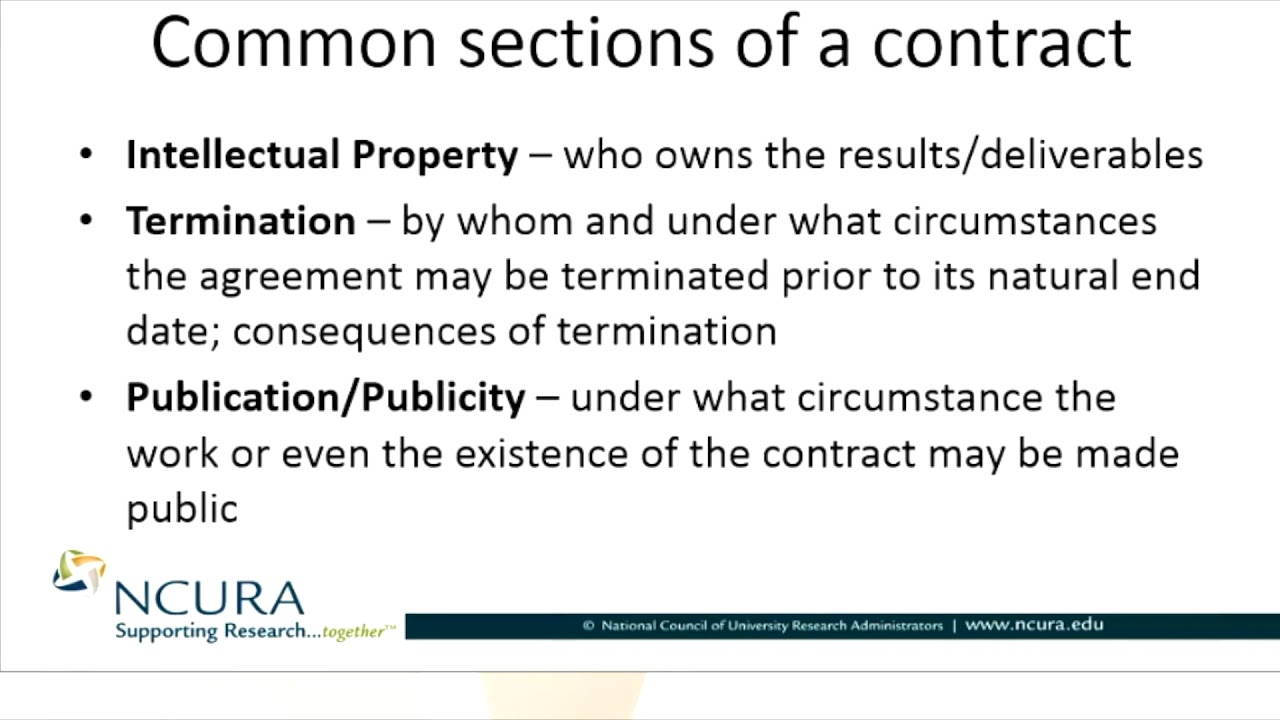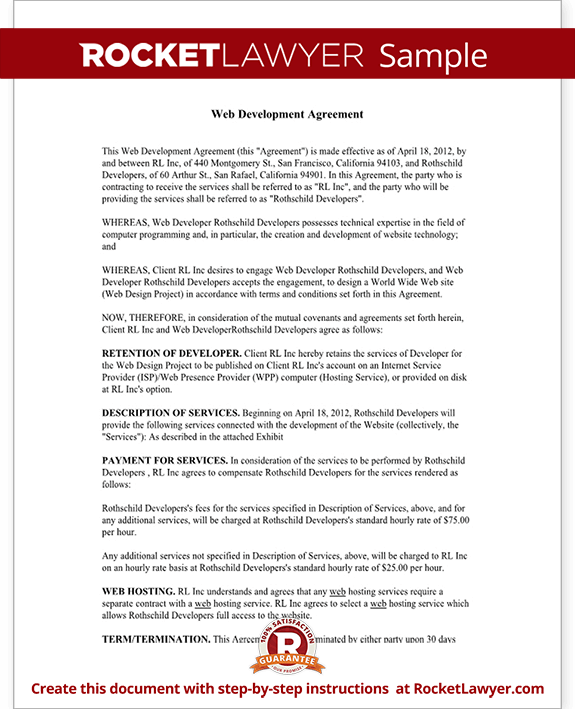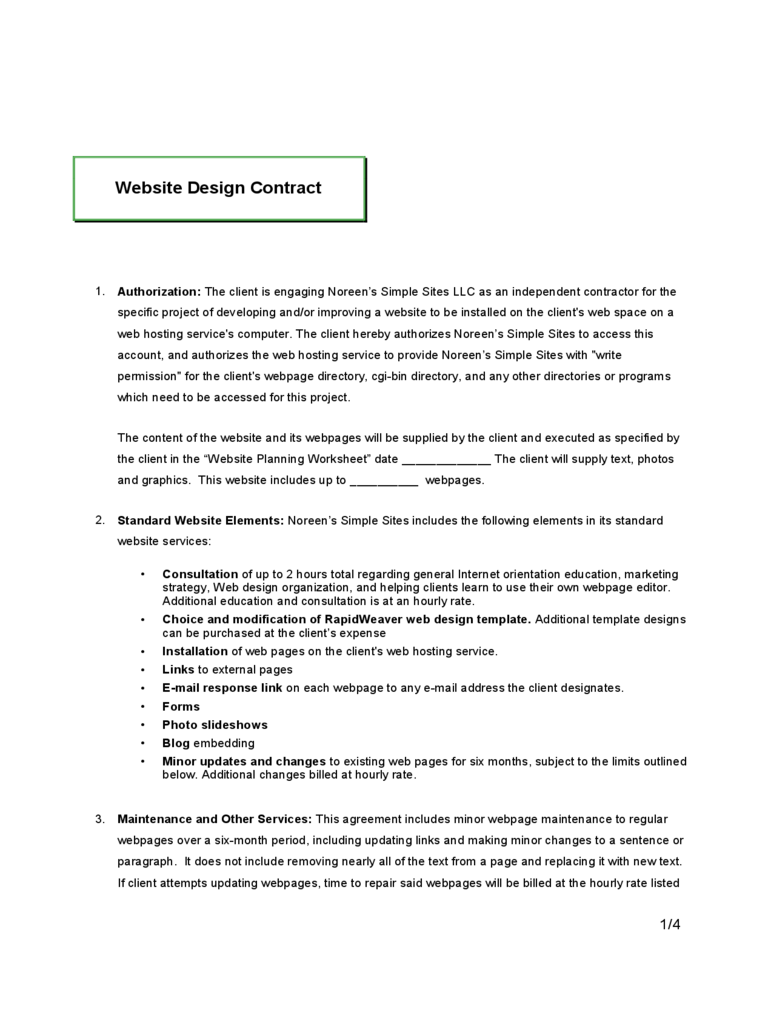Imagine this scenario — You’re just finishing up a huge website design project. You’ve been working on it for weeks and finally got it done.
You send the final deliverables to the client, along with an invoice for your services. And then…
Crickets.
The client doesn’t pay, and they stop responding to your emails.
It’s scenarios just like these that make it vital that as a freelancer or business owner, you have a contract in place with every client you work with.
In this article, you’ll learn what a web design contract is, why you need to have one in place with each of your clients, and how to write one.
And don’t worry — We’re also sharing a few online resources for web design contract templates, so you don’t have to start from scratch.
Table of Contents
What is a web design contract, and why do I need one?

A contract is a legal agreement between two parties.
In the case of a website design project, contracts are legal documents that serve as agreements between the website designer and the client. It stipulates what the responsibility of each party is.
First, having a contract in place helps to protect your client. In some cases, your client might be handing over a substantial amount of money (anywhere from $1,000 to six-figures for the design and development of a site) and trusting you to follow through on the job.
Unfortunately, there are dishonest contractors out there. Having a contract gives the client a leg to stand on in court in case things go awry.
Next, and probably more importantly from your perspective, the contract helps to protect you as the web designer and developer.
Most freelance website professionals, such as web designers, graphic designers, and web developers, have probably experienced a time where a client didn’t pay their bill on time. Or worse — They didn’t pay it at all.
And without a contract, you won’t have much of a case in court to get the money that’s rightfully yours.
Having a proper contract in place also helps to ensure everyone is on the same page.
There are times where it’s not that someone is intentionally stepping outside the bounds of an agreement, but there’s simply been a miscommunication.
Having a contract that both parties have signed helps make sure everyone is aware of the scope, timeline, and cost for the work.
If you want to ensure your contract is legally-binding, your best bet is to have an attorney look it over and provide you with some legal advice.
The good news is that you can just create a single web design contract template that you have an attorney look over, and then you can use the same design contract template for every client.
It’s also worth noting that a contract only means anything if you’re willing to enforce it.
Luckily, in most states, you’ll pay less than $100 to take someone to small claims court for a breach of contract. Depending on your state, you can sue for anywhere from $2,000 to $10,000 in small claims.
That being said, the sole existence of a contract will hopefully make the client more likely to pay their bill on time.
What should you include in the contract?

Now that you know what a website design contract is and why you must have one, let’s talk about what needs to go in your contract.
Names of parties
First of all, be sure the contract includes information about each party. This information includes the business or agency name, point of contact, contact information such as email address or phone number, physical address, and billing address.
Duration of work
The contract should include the duration of your working relationship. What day does the agreement begin? The start date might be the current date, or it might be a specific date in the future that you plan to start the project.
The duration should also designate an end date for the contract. This date will vary depending on what type of working relationship you have.
If you’re signing on for long-term retainer work, then the contract might state that the deal ends whenever one of the parties terminates the relationship. For a project with a set duration, you’ll include the end date in this section.
Description of work
The description or scope of the work is one of the most critical sections of the contract. This section is where you’ll clearly define what your responsibilities as the designer are.
Be as specific as possible in this part of the contract, as this is where many issues tend to arise.
The last thing you want is the client coming back later and claiming you didn’t do everything you had promised to do.
For smaller website packages, you might simply be designing the website pages. For web design projects with larger scopes, details are important. Will you be helping to create any of the content? Will you be doing the development? What about search engine optimization?
It’s particularly vital you clarify whether you perform just the design services, or the design and development. Many clients aren’t clear on the difference, so this is your opportunity to educate them.
The scope of work should not just include your responsibilities, but your client’s as well. It could be that you need specific information or branding files to proceed with the project.
It could also be that you require the client to complete a design questionnaire before you begin the work, or that they need to sign and return the proposal you submitted to them.
Deliverables

In addition to the project scope, you’ll need to include specific deliverables. When all is said and done, what will the client receive from you? Depending on the scope of the project, this could include:
- Responsive WordPress design
- Social media images
- A particular number of website pages
- Website landing pages
- A website contact form
- Mockups
- UX design / UI design
- E-commerce site
Additional terms
When it comes to web design work, there are some tasks that your client might assume you’ll be performing. This is the time to clarify whether or not that’s the case.
For example, what happens if the website has issues one month after your contract ends? Are you responsible for fixing those issues, or is that up to your client? Website maintenance should be discussed in the contract.
What about revisions? It’s important to be clear about whether your client will be able to request any revisions after you’ve sent them the deliverables.
Copyright information
Next up, let’s talk about copyright and intellectual property rights. You and your client will need to agree on who owns the creative work. In many cases, designers might require the client to display a copyright notice on the bottom of each page and a reference to the designer.
You also need to clarify what the client can do with the deliverables you’ve given them.
Whose intellectual property are they? It’s usually the case that the client has the rights to use them within their own business but cannot sell any of the deliverables to another party.
Whatever your terms are, include them in the contract.
Confidentiality
If you or your client are going to be sharing trade secrets with one another, you’ll certainly want a confidentiality agreement.
Often the designer is getting a behind-the-scenes look into the client’s business, and they might feel more comfortable knowing you won’t be sharing what you’ve learned.
Payment amount and terms
Alright, let’s talk about the part of the contract that can cause a lot of problems for designers — The payment terms. There will always be clients that try to delay payment or avoid it altogether.
The contract needs to make it as clear as can be how much the client owes you and when they need to pay you.
You might require an up-front retainer to get the project going. If that’s the case, include it in your contract.
Then, indicate what date you’ll send the final invoice by, and how long the client has to pay it. Many designers rely on a net-30 schedule, meaning the client has 30 days to pay the bill.

Termination clause
Your contract should include a termination clause. Specify under what terms either party may terminate the contract.
Also, be sure to clarify under what terms the client still owes you money if they cancel.
It could be that if they cancel before the end of the project, they lose their retainer. Or maybe your contract stipulates that they still owe the full amount.
Additionally, what do you owe the client if you’re the one to back out? Make sure the contract is clear.
Signatures
No matter how well-written your contract is, it doesn’t mean anything without this section. Make sure that both parties have signed and dated the contract.
If you aren’t going to be seeing your client in person, there are plenty of online services such as HelloSign and DocuSign to help facilitate online signatures.
And don’t worry, you don’t have to start from scratch with your contract. There are lots of tools that provide template contracts that you can simply plug your information into, such as:
Web design contract examples
Example #1:

It’s clear from this first sample contract that a web design agreement doesn’t have to be a complicated document.
This example lays out the duration and nature of the relationship, the responsibilities of each party, and the payment the two parties have agreed to. They’ve hit all the high points.
Example #2:

The sample above is a web development agreement from Rocket Lawyer.
In addition to the details about the nature of their developer and client relationship, they also include a stipulation about another contract the client must have in place for web hosting.
They also include terms of how the relationship may be terminated.
Example #3:

The final example is just the first page of a multi-page contract.
One important thing to note about this contract is that it lists out all of the deliverables that come included with the website design package.
Having this in your agreement is an excellent way to ensure the client knows precisely what they’ll be receiving from you.
Conclusion
Contracts are necessary for running a web design business (or any company, for that matter).
First, having a contract in place helps to ensure that everyone is on the same page.
We all know how frustrating it can be to start work on a project, only to find out that you and the client had very different ideas about what the final product would look like.
The contract also helps to prevent scope creep, which is when little by little, the scope of the project grows far beyond what you and the client initially agreed upon.
Finally, freelance design contracts help to prevent those awful situations where a client doesn’t pay, and you don’t have a contract to enforce.
Hopefully, after reading this article, you have all of the resources and information you need to craft a web design contract that you can use over and over again with clients.
 Best SEO Companies
Best SEO Companies Best SEO Companies
Best SEO Companies